Autumn’s Arriving in Style!
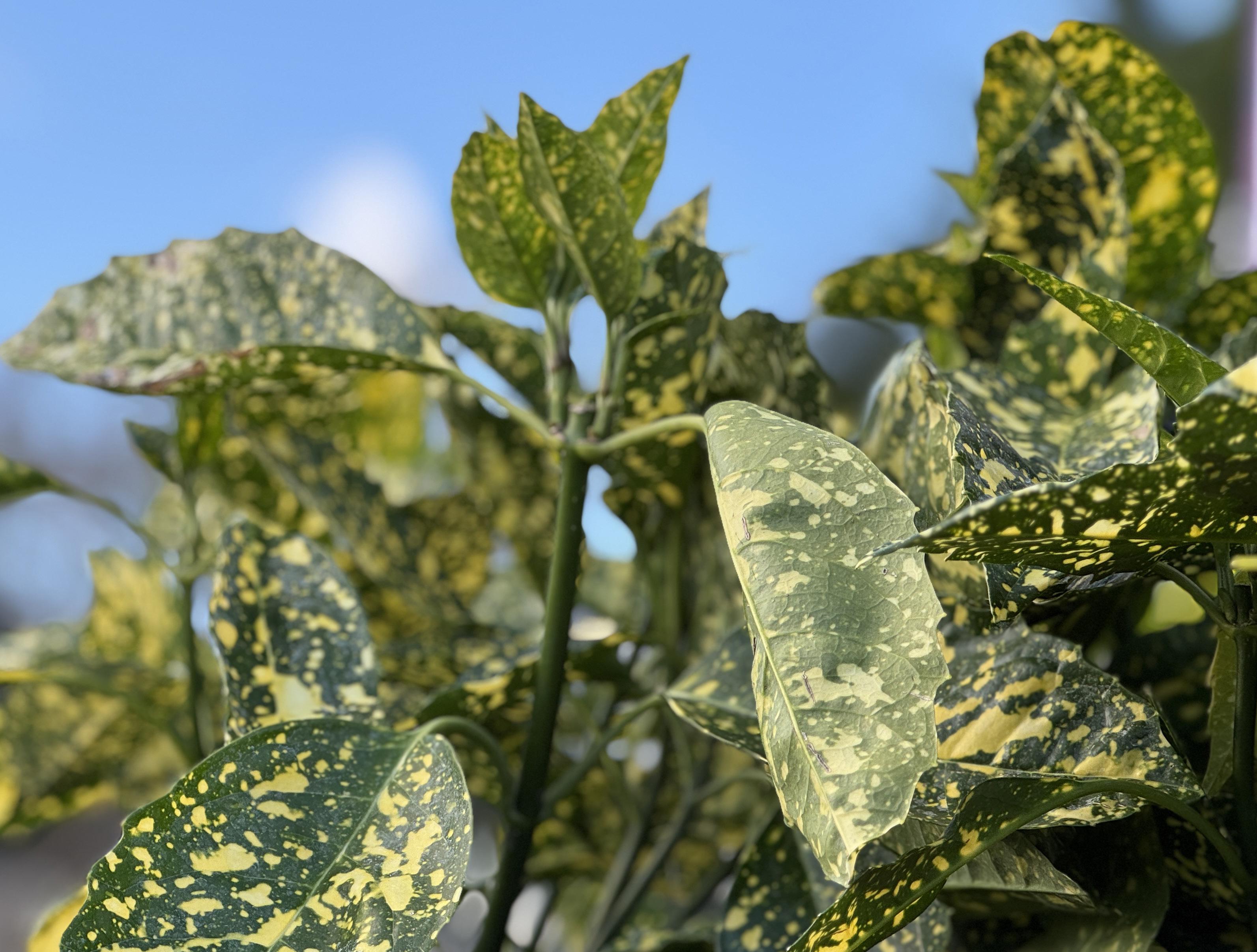


“It is the duty of a caring society to ensure that children who are seriously unwell, and their families, have access to expert and compassionate palliative care.”
Noah’s Ark is a local North London-based charity focusing on helping children with life-threatening illnesses receive as much care and support as they need without treating the children like patients; As they say, “enable those we support to enjoy life as children, rather than as patients; as families, not just as carers.” They provide high-quality support with experts in palliative care and paediatricians, caring for each child with an individualistic approach so that every family receives the necessary support they require.
For 2025, Sunshine Garden Centre have partnered up with Noah’s Ark to help raise money and support this wonderful charity. We have been helping Noah’s Ark by organising activity walks for the children around the garden centre and we are planning on doing more workshops and activities in 2025. But what about you, our esteemed customer? We have introduced donation cups at our tills; our reusable plastic bags will cost 30p, with all proceeds going straight to charity. The money you help us raise will make sure Noah’s Ark can maintain and even supersede their exceptionally high quality care for every child.



Words By Phil

Looking for something new? Phil shows us a set of plants that taste as good as they look!
Planting soft fruit in the Autumn is one of the best ways to ensure a productive garden in the following years. In the Autumn, the soil remains relatively warm, with a good chance of a decent amount of rain, which gives newly planted bushes the chance to establish strong root systems before the onset of winter. By spring, these plants are ready to burst into growth and produce a decent crop in the following years.
Several Types of soft fruit are especially well-suited to autumn planting. Raspberries, Blackberries, Redcurrants, and Gooseberries all thrive when planted this time of year. Blueberries can also be planted, though they require acidic soil (ericaceous compost). If your garden soil is unsuitable, I highly recommend planting them in pots using ericaceous compost.
Preparation is key. Choose a sunny, sheltered spot with well-drained soil. You may need to add some grit to your soil when planting. Enrich the ground with plenty of organic matter, such as well-rotted farmyard manure. Space plants appropriately: currents and gooseberries need around 1.5 metres, raspberries about 40cm between each cane, & blueberries around a metre, firm the soil around the roots & water well. Adding a mulch retains moisture & suppresses weeds. After planting, continue to water during dry spells.



Words By Denis
No need to rely on flowers to keep your gardens looking beautiful! Denis showcases the beauty of ornamental grasses.
Hailing from Ireland’s Emerald Isle, there’s nothing that fills my heart with joy more than looking out the aircraft window as we land across the 40 shades of green synonymous with my homeland.
In total, grasses and cereals account for some 40 % of the Earth’s vegetation. This consists of all the commercially grown wheat, barley, maize, rice, etc. It also includes the vast grasslands of the Savannah and the Steppes. These can vary significantly in size from the tiniest grasses to towering bamboos. Some of my fondest memories were on my uncle’s farm just before harvest, walking through the fields with him, scythe in hand, doing a test on the moisture content of the grains and running my fingers through it as we walked the field.
It breaks my heart when I look around and see the rapid transformation of the modern garden into plastic jungles dominated by swathes of astroturf. I often think gardens are wasted on such people but alas, there are some valid arguments to be had in their favour too.
We are not dawdling on the issue of lawns today, however, when there is a plethora of other fine ornamental grasses to have a look at. Some of their attributes arise from their
vast array of coloured leaves, ranging from the darkest crimson through light green, variegated steely blue to the darkest of greens. Couple this with their ease of growth, the immense variety of habitats in which they grow, and there is sure to be something for you. Their use in the background as large billowing swathes really works, as does the diversity of the seed heads. Many of these can be left standing through the autumn and winter for seed for birds and their excellent ornamental attributes.
Sorry to say, as good as Wordsworth was with his daffodils, the swish and rustle of longstemmed grasses rustling gently in the breeze surely wins out, especially on undulating grounds, watching the wind rippling through a crop, like a wave on a warm summer day. Bliss!!
Those of you who want a taste of the Orient in the garden could look at the following varieties: Imperata cylindrica Red Baron, a blood red tip grass on greener lower shoots, Carex Evergold is a small compact yellow and green variegated form great in pots or the edge of beds and hanging basket, Liriope muscari (strictly not a grass, but let’s not split hairs!)
The steely blue of the Leymus & Festuca glauca works great in hot, dry borders if you are looking for something to plant with recent environmental changes being forced upon us.
In the early Autumn, most grasses tend to produce seed, which adds an extra delicate layer on the top of these majestic plants. Try out some of the fantastic Miscanthus varieties reaching heights of up to 6ft with their attractive feathery seed wands or the even more bombastic Cortaderia (pampas grass), but take care not to run your hand through this with razor-sharp leaf blades. Pannicum varieties like Northwing and Heavy Metal are now fully on display.

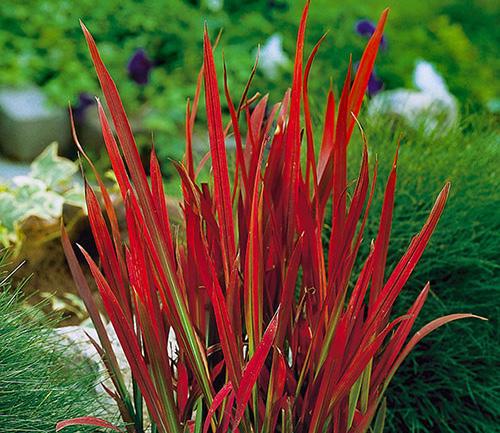
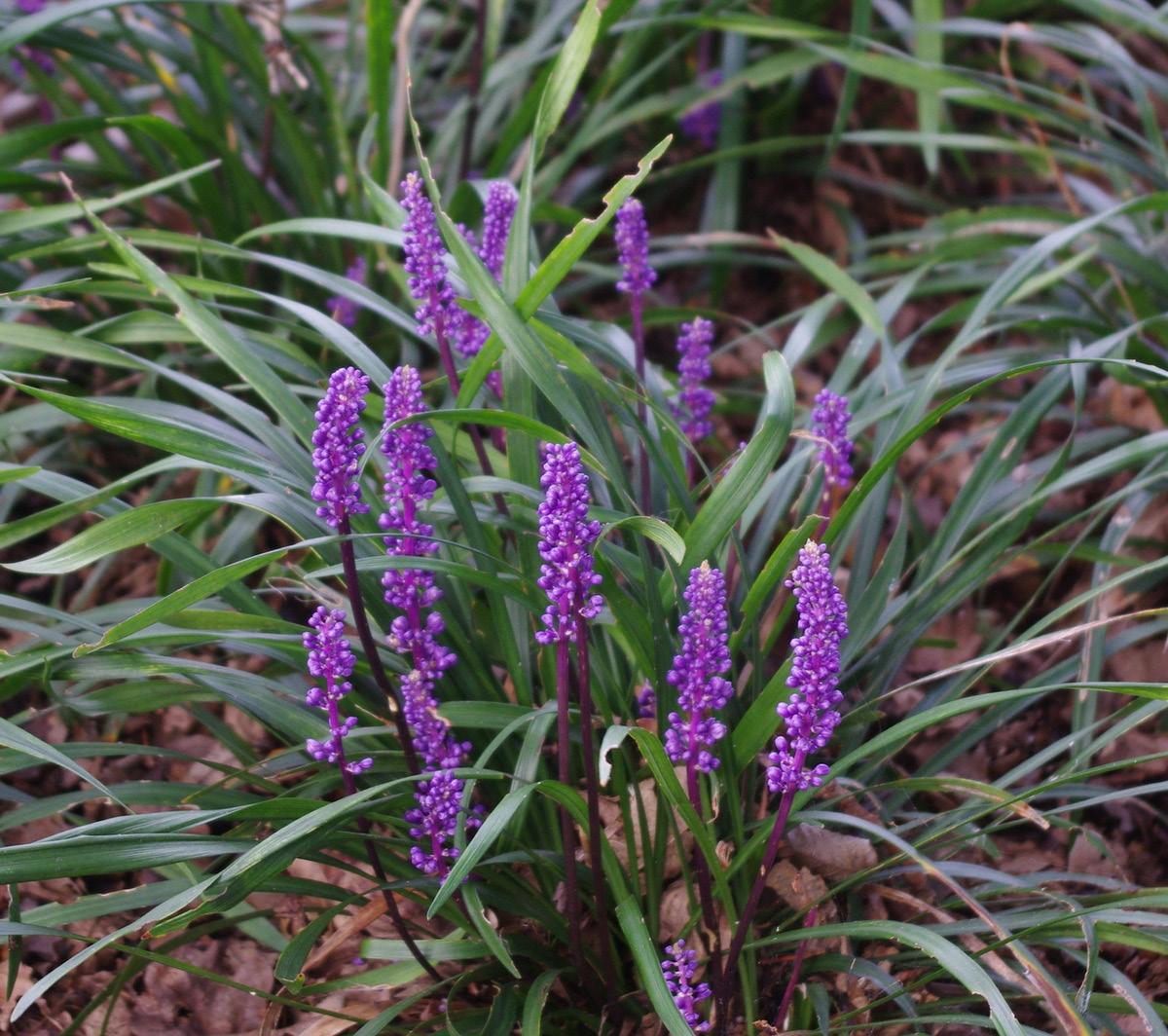


Words By Fiona






Sunshine’s favourite season is back! We are looking towards some of our favourite bulbs.
Every August, we start selling bags of brownish, vaguely spherical objects that hold a promise of better things to come. I’m talking of course about spring bulbs! Every year, I feel like a kid in a sweetie shop, and there’s always new varieties to enthuse over and try. This year, a delightful Darwin hybrid tulip from Taylors Select range has caught my attention, Light and Dreamy; purple, pink and lavender with a hint of blue, cup-shaped flowers held on strong 24cm stems, flowering in April/May sounds delightful. I haven’t yet decided what to pair it with, but I have plenty of time to plan, as at time of writing, we aren’t yet fully stocked, holding about 70% of the 309 varieties of spring bulbs that we’re expecting this year.
I am, however, getting a little ahead of myself as this time of year we also stock Autumnflowering bulbs. Colchicums planted in August will flower in September/October this year, & each bulb produces a mass of flowers. I recommend planting in at least three for a good effect. They’re not only beautiful, but they’re a late, invaluable source of nectar for our pollinators. Another one to consider is Sativus or the Saffron Crocus; it’s not only beautiful, but also useful. The golden stamens are actual strands of saffron that you can use in cooking!
Another stalwart of spring are Narcissi (Daffodils), and with careful planning, you can have Daffs from January through to May. One of my personal favourites is Thalia, an elegant, white, multi-headed, fragrant Narcissi with flowers that remind me a little of orchids. Narcissi come in a range of sizes to suit any aspect and can be a lovely jolly yellow, through orange and peach & on to lemon and white. Tete a Tete paired with muscari and early flowering tulips, such as The First in a pot by the front door, will cheer you up every time you pass.
Let’s not forget some bulb essentials. Bulb planters are a tool which makes it very easy to plant bulbs in soil. Planting in pots, troughs and bowls? Bulb Fibre is the ideal planting medium. Last but by no means least, Bulb Starter is a boon; it increases the bulb’s ability to feed itself through the action of mycorrhizal fungi and contains essential nutrients all aimed at settling in the bulbs faster, giving you stronger growth & long-lasting flowers and will feed the bulb ready for future years.
We look forward to seeing you in the bulb room. Don’t leave it too long, as many of the popular varieties sell out early!

Words By Pete

Don’t think that you can stop gardening now the weather’s cooled down! Pete shows us a couple plants that can warm up any garden in no time!
With Summer fading, it’s the perfect time to refresh your pots and baskets. To liven up those tired-looking containers. The cooler temperatures bring an opportunity for some glowing, stunning seasonal displays with plants that thrive in the cool, crisp air and softer sunlight. Whether you’re decorating a patio, balcony, or front entrance, Autumn planting adds warmth and colour to your outdoor spaces. Choosing the right plants will not only provide rich hues and textures for now, but with the right care, can give you vibrancy and joy all the way through till next Spring.
For texture and height, ornamental grasses are always a good starting point. You can add feathery movement with Stipa, or the taller Carex varieties, or a shorter, spiky look with Festuca. Heuchera are also a staple of our Winter pots, with their vibrant evergreen leaves in burgundy, amber, red or lime adding long-lasting interest, and working as a great counterpoint to flowering options. As for those flowering plants, Pansies, Violas and Cyclamen all hold their own against anything the Summer has to offer. Cyclamens are perfect for shaded spots, their delicate pink and white flowers brightening your dull corners. For brighter places, the joyful faces of the
Pansies and Violas will uplift you on the chilliest of Autumn mornings. Hellebore and Heathers are also great options, small and evergreen, they withstand the worst a London Winter can throw at you, pushing up flowers throughout the season.
Choosing the right compost is important too; a well-draining mix such as John Innes compost is especially important at this time of year. Also remember that although the Autumn rain is likely to help, you will still need to check for water regularly, containers dry out faster than garden beds and may not catch as much rain as the rest of the garden. With the right plants and care, the Autumn and Winter months don’t need to be a time of dormancy, so get planting and make your Autumn glow.


We may be many things, but being camera shy is definitely not one of them. If you love photographing the displays we’ve been showing over the years, please send them our way on Instagram!




Words By Simon

What a funny word! But what does it do? Simon enlightens us.
Mulch is a layer of material laid on the surface of the soil. It has many benefits:
• Helps retain moisture – less watering
• Supresses weeds
• Can provide nutrients
• Improves soil organic matter and encourages beneficial soil bugs
• Deters some pests
• Soils warm up more quickly in the spring
• Protects roots from extremes of temperature
• Looks good!
Now you’ve seen what brilliant stuff mulch is, I’ll tell you what you can use as a mulch. Firstly, biodegradable mulches: these break down gradually and need occasional replacing, garden compost, wood chippings, processed bark, leaf mould, farmyard manure, straw (for strawberries), spent hops (poisonous if eaten by dogs) and RocketGro magic mulch. Non-biodegradable mulches do not boost
the fertility or structure of the soil, but they do suppress weeds, conserve moisture, and some have the added advantage of looking decorative. Slate, shingle, pebbles, gravel, stone chippings and other decorative aggregates are often used as a mulch across beds. to use any materials made from plastic. Dark coloured material will warm the soil in the sun, whereas light coloured mulch, such as white gravel, will reflect sunlight and keep roots cooler in strong sunlight.
Sheet mulches or woven landscape fabric can be used for new beds or borders. After laying, slits can be made in the fabric, allowing direct planting through it. The downside is that these mulches do not look very attractive, but they can be camouflaged with gravel or a more attractive layer.
Get mulching this autumn!

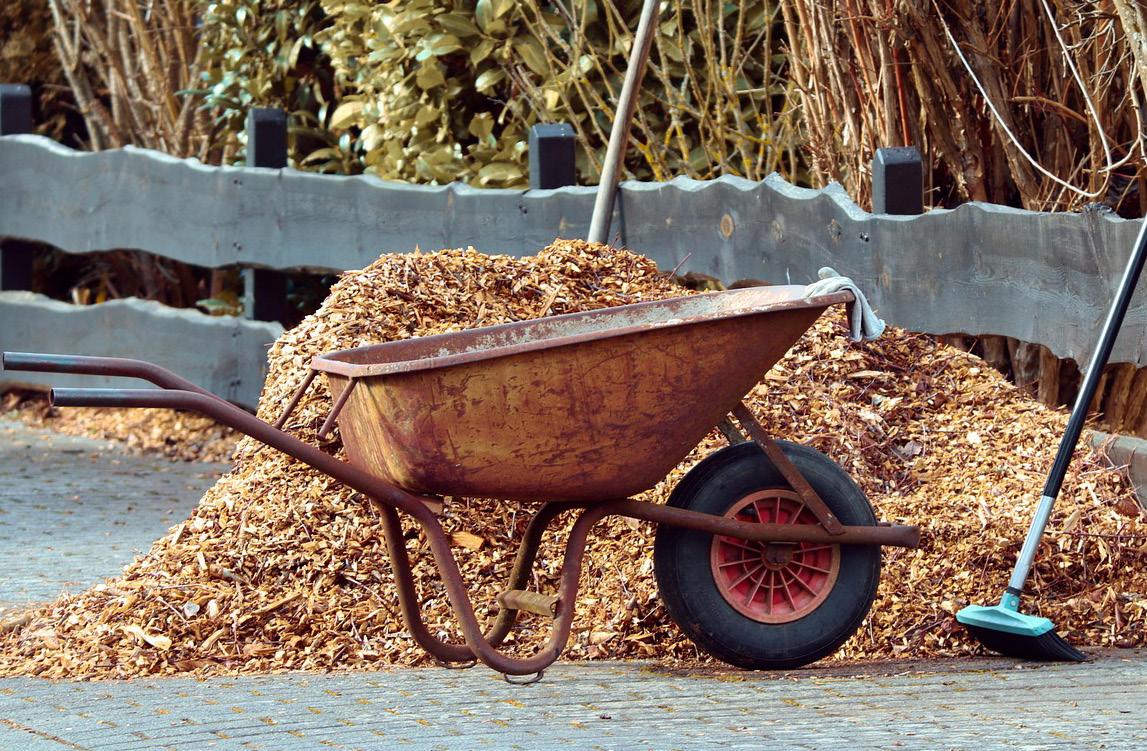
Words By Alice

Compost is an invaluable asset for gardens, especially in Autumn! But how do we make it?
At Sunshine, we believe that compost is the foundation for ensuring healthy and beautiful gardens. One of the best ways to enhance the soil you use is by creating your very own compost heap! Creating your own compost heap not only has major benefits to the environment but also can be an economical way that helps repurpose old waste into a useful garden must-have!
The steps needed to create a successful compost heap involve:
1 2 3
Make sure to select a well-drained area within your garden that is not located in direct sunlight.
When starting the heap, you can either compost directly on the ground or choose to use a compost bin, available in-store. Any compost creation must be in contact with the soil.
The best waste to use when starting a compost heap would be green waste, such as grass clippings and vegetable kitchen waste. Moreover, adding brown waste consisting of newspaper and dry leaves can also help keep
the correct balance and ensure effective decomposition.
To accelerate the process, it is extremely Important to turn the compost with a fork to aerate it. Ensure to keep adding beneficial waste in order to keep your compost heap happy!
Top Tip! Use Vitax compost maker to speed up the breakdown of organic material, which would otherwise degrade slowly. In no time, you’ll have sweet-smelling smelling lovely crumbly compost.
For extra help on compost making, compost bins and other useful gardening tips, please come and visit us in-store, where we will be happy to answer questions and provide advice.


Words By
Fiona






Have you taken a look at your indoor plants recently? Fiona gives us 9 amazing tips you don’t want to miss!
I don’t know about you, but my houseplants at home have been growing so strongly, I have a queue of plants that need potting on. If you find yourself in the same situation here are a few tips.
Try and plan ahead. I recommend using Root Ultra (available in the houseplant section in store) for at least a couple of waterings (but no more than weekly) before you repot to help prevent transplant shock and for a couple of months after repotting to help the plant settle into the new soil quickly.
Once a plant’s roots are showing through the bottom of the nursery pot that the plant came in, it’s time to repot. Do bear in mind, however, some plants like Spider Plants for example, which have thick fleshy roots or Boston Ferns, which have dense fibrous roots, may not do this, and then it becomes a judgment call.
To help you decide, have a look at the leafy top growth. Has the foliage filled the top of the pot? If yes, then you should probably repot. Is it pot-bound? Slide the plant out of its pot and look at the roots. Are they coiling round inside the pot or densely matted? If yes, then repot.
Choose a nursery pot one or two sizes bigger. Too big and you can risk root rot.
Use the appropriate compost, houseplant, cactus and succulent, citrus or bonsai, etc.
For large plants, I always recommend a drainage layer of either potting grit/ gravel or clay pebbles.
Gently rough up the roots of the rootball to loosen the roots.
Add enough compost to the bottom of the pot so the top of the rootball is a couple of centimetres below the rim of the pot. Fill in around the sides.
Water in the plant using a Root Ultra solution, leave cacti and succulents for a week before watering. Root Ultra is a brilliant product, but not a feed. Please ensure you feed your houseplants as appropriate.
I wish you all continued, happy growing and hope to see you all in store soon! 1 2 4 5 6 7 8 9 3

Words By Daryl
Grab a warm drink and enjoy these incredible hearty dishes.
As summer fades and autumn settles in, the evenings remain light, warm, and perfect for a relaxed BBQ. There’s something special about grilling outdoors with a crisp breeze and colourful leaves all around. Here are three quick, delicious BBQ recipes that celebrate the season without keeping you stuck at the grill. So, grab a sweater, light the coals, and make the most of these golden evenings!
Juicy and flavourful, chicken thighs are ideal for quick grilling. Marinate them for 30 minutes in a mix of maple syrup, Dijon mustard, garlic, olive oil, and a splash of apple cider vinegar. Grill over medium heat for 6–7 minutes per side, brushing with extra glaze in the last few minutes. The sweet, sticky finish pairs beautifully with the smoky char.
Slice your favourite sausages, crisp apples (like Honeycrisp or Pink Lady), and red onions. Toss with olive oil, salt, pepper, and a sprinkle of thyme. Place in a grill-safe cast iron pan and cook over direct heat, stirring occasionally, for about 15 minutes. It’s the perfect blend of Savory, sweet, and seasonal.
Chop sweet potatoes (pre-steam them for 5 minutes), red peppers, courgettes and red onion. Toss with rapeseed oil, rosemary, salt, and pepper. Thread onto skewers and grill for 10–12 minutes, turning occasionally. They’re colourful, hearty, and pair with just about anything.


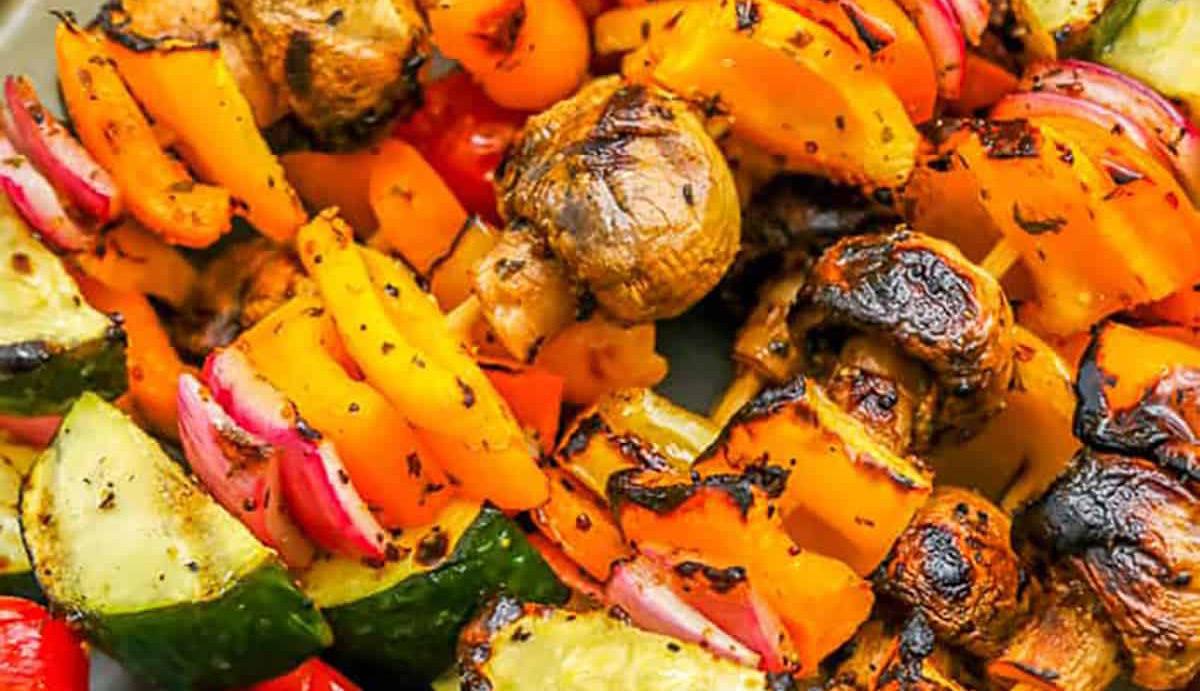
with Renew Sharpening Se rv ices
1ST MONDAY OF EACH MONTH
9:30am-3:30pm in the Car Park
Available Februa ry to Dece mber
DROP IN FOR A DAY O F SHARPENING, FIXING AND POLISHING FOR A NY B LADE! T AP T HE SCREEN FOR MORE INFORMATION.
